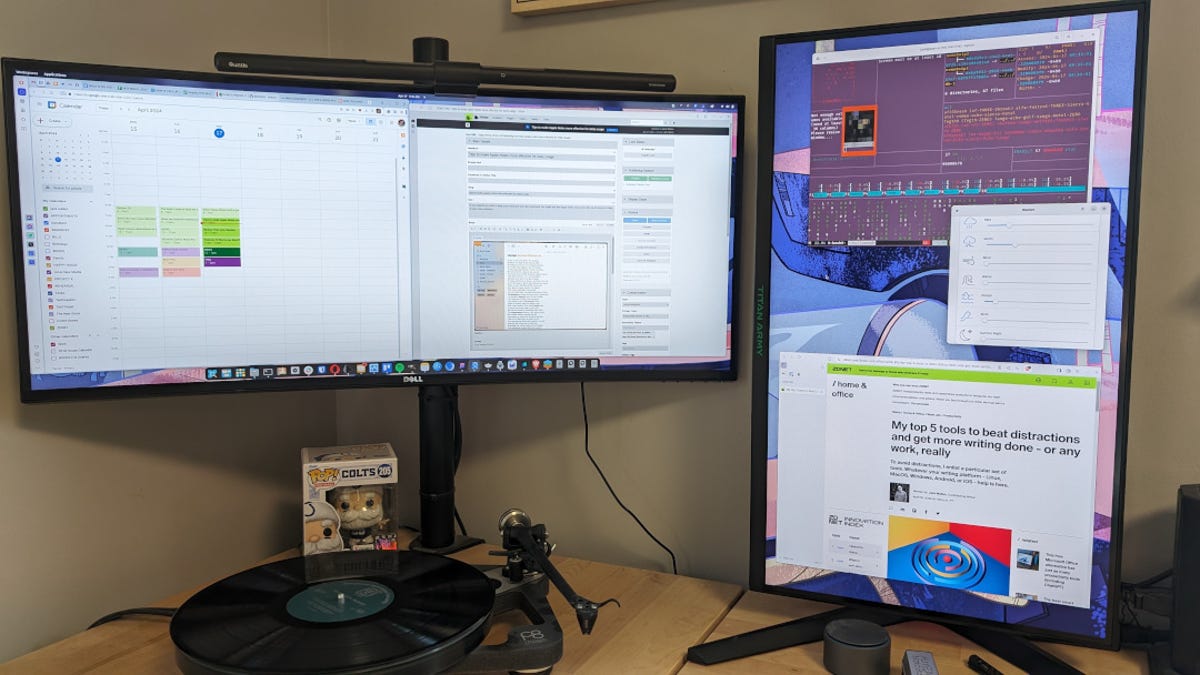AI will change the role of developers forever. Here’s why that’s good news

There’s concern that widespread use of AI will result in a job cull, including for IT professionals. But Rajeswari Koppala, senior manager of DevOps at United Airlines, says automation presents new opportunities for everyone, including the staff in her department.
“I am an evangelist of automation,” she says. “I think if you use it properly, you can do wonders. There’s a lot of scope where we can use AI tools and machine learning to optimize what we’re doing.”
Also: 6 ways to ace a job interview, according to these business leaders
In the case of United, Koppala is already introducing automation through the Harness software development platform, which uses AI to simplify DevOps processes and support continuous integration and continuous delivery (CI/CD).
The technology has helped to accelerate software deployment cycles by 75% and reduced the build process from 22 minutes to just five, allowing IT professionals to focus on higher-value tasks, such as creating new services that meet business requirements.
Rather than spending hours provisioning infrastructure and dealing with repetitive operations requests, United IT staff can get on with what they do best — developing and deploying applications.
Also: AI could automate 25% of all jobs. Here’s which are most (and least) at risk
Other companies are taking a similar approach, with research from Stonebranch suggesting increased use of AI and automation across the IT profession is a common trend. More than four-fifths (81%) of organizations plan to grow their automation program in 2023 and 86% plan to replace or add a new automation platform.
That’s certainly the case at foreign exchange specialist Travelex, where assistant vice president Mayank Goswami is overseeing the use of a CI/CD platform from technology specialist CircleCI to automate software deployment processes across multiple environments.
The platform allows Travelex to roll out standardized development templates quickly, rather than having to set up new infrastructure in every location around the globe.
Goswami says the implementation of the CircleCI platform is part of a broader shift towards Agile and DevOps in the business, and IT professionals shouldn’t be concerned by the ever-increasing use of automation as part of the development process.
Also: 5 ways to be a better manager: Best practices every leader should know
“Change is inevitable,” he says. “Technology changes at least every two or three years and maybe quicker. You can’t stick to what you know. You have to learn. If you consider change as an opportunity, that’s how you will be able to survive in the IT industry.”
The end result of increased automation, says Goswami, is bigger efficiencies and better working practices for everyone.
“When people work together and they’re focusing on the larger business objective, and doing everything to achieve that incrementally through automation and using DevOps practices and tools, I think that’s where the real benefits come through,” he says.
Koppala also believes that IT professionals shouldn’t be overly concerned about the rise of automation. New technologies bring fresh opportunities for operational efficiencies. She gives the example of automating deployment pipelines.
Also: Generative AI means more productivity, and a likely retrenchment for software developers
“If you have learned something from the work that you have done — and create models that can use the knowledge that is already in the system — that can bring big benefits.”
However, it’s important to recognize that, while automation can boost efficiency and reduce the number of repetitive tasks in an IT department, there are limits to what can be achieved.
Koppala says building automation into software development and deployment processes is a great first step, yet it’s just one stage in a much longer journey.
“Over the years, automation has been a continuous struggle in the organization because any DevOps or platform engineering team tends to create automation for the use cases they know at that point of time,” she says.
Also: These are the most in-demand tech roles in 2023
Going beyond that level — and adding intelligence into automation, so that manual intervention can be reduced when use cases change — is where United wants to go next.
Koppala says increasing the amount of intelligence in the software development process is one her team’s major objectives for the next two years. And she expects AI to play a big role.
“When the use case changes, automation doesn’t work — and the team needs to step in and do the manual work. So, how do you build intelligent automation that takes care of the use cases that you don’t know about yet? That’s the space where you can make use of AI and ML models and I am actually very optimistic about their role in the future.”
Also: How generative AI is changing your technology career path
Like Koppala, Goswami also expects to start seeing increasing amounts of automation in the DevOps environment.
He says it’s early days for Travelex when it comes to forays into AI, particularly for generative tools, such as ChatGPT.
However, Goswami and his colleagues are wise enough to keep a watchful eye on fast-moving developments in AI.
“All these emerging technologies are on our radar to look into whether there’s something that delivers business value from the point of view of our customers.”
Back at United, Koppala says her team is already investigating nascent AI developments, including a feature in the Harness platform called Continuous Verification, which uses real-time, semi-supervised machine learning (ML) to model and predict service behavior.
Also: Want to learn more about prompt engineering? OpenAI’s free course can help
She says the aim is to integrate the deployment pipeline with monitoring capability. Then, if problems occur when a new service is rolled out, the ML-led technology can intervene automatically, which means business-critical applications keep running.
“For example, say I’m doing a deployment today, it goes live, and it all looks good,” she says. “But what happens if, after two days of the deployment, the performance of the service starts to degrade and no one notices straightaway?”
Koppala says that’s where Continuous Verification fills a gap — the technology continuously monitors service performance and automatically takes proactive action.
“As soon as services performance is degraded, this deployment pipeline gets triggered to roll back to the previous version, which was working fine,” she says. “So, that’s kind of self-healing — that’s an intelligence-led tool that provides benefits for everyone.”
Also: How I used ChatGPT and AI art tools to launch my Etsy business fast
Those kinds of plus points mean Koppala and her senior management colleagues at United are keen to look at how AI might help boost a wider range of software development and deployment processes.
She recognizes that the introduction of other AI tools is “a bigger journey altogether.” But, once again, some significant progress is being made, including the evaluation of an AI-based tool that shows the impact of infrastructure changes before they’re pushed live.
“We’re not there yet, we’re still working on that,” says Koppala, who reiterates that emerging technology will continue to play an ever-increasing role in the working lives of United’s IT and development professionals.
“That’s our objective for the next two years,” she says. “We want to close that space and take advantage of the right tools.”




